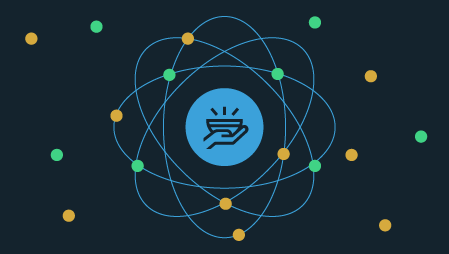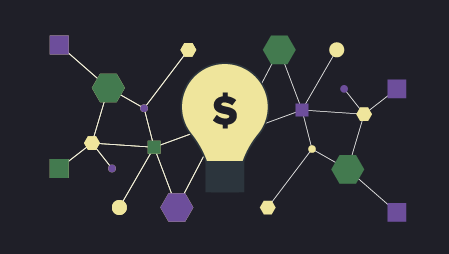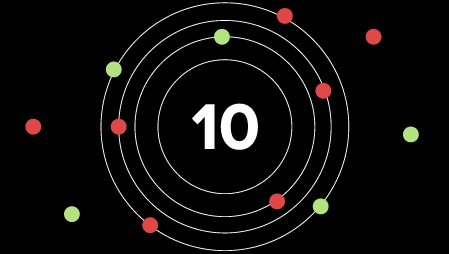Humans are fallible. Even the most skilled and experienced professionals can make rash judgments, become overwhelmed by emotions, and grow weary or tired. All of these experiences can lead to mistakes, affecting health professionals and researchers alike. Worse yet, they can happen at any time, both in the lab and outside of it. Luckily, automation can help professionals automate the most tedious tasks and takes some burden off their shoulders.
With modern technologies like AI, advanced automation, and data analytics, many of the rote and menial tasks that researchers and health professionals face day-in and day-out can be automated, and with a strong degree of accuracy.
The accuracy and speed alone with which these technologies work have serious implications for the future of the field.
1. Automating Clinical Trials.
Clinical trials are a necessary element of medical research, and they must be conducted before any new products, pharmaceuticals, or devices are released to the market. The problem is that trials cost a lot of money, and even more when they’re conducted or organized poorly. Automation can help streamline these kinds of operations in many different ways.
Creating and filling out forms, procedure annotations, and parsing the results can all be handled by machine learning or data-driven systems. It speeds up the trials, ensures more accurate data, and may lead to better and more informative results. Machine learning solutions can ingest trial data to find trends, patterns, and other behaviors that would otherwise remain hidden from human analysts.
There are many existing tools that incorporate machine learning and Robotic Process Automation (RPA) practices in order to speed up and enhance clinical trials. Some examples include Nintex, Formedix, Ripple, and more.
2. Cooperation and Cobots.
Throughout the entire medical field, not just in research and development, many tasks could benefit from advanced robotics, or what’s being called collaborative robots (cobots). The most common example of this is a robotic arm or component that sifts, sorts, and handles various materials.
In research, cobots can be implemented to speed up tasks and handle surface-level duties. Imagine machines that shake or mix fluids, sorting arms that safely store and handle hazardous samples, or even bots on wheels that move about and carry heavy items or equipment.
Automation isn’t always about the digital aspects of research; it can deal with the physical world too. In some cases, automated robotics are even saving lives.
3. New Methods and Equipment.
Health care professionals could always use newer and faster ways to complete various actions, from radical procedures to basic care, without sacrificing patient safety and satisfaction. The same is true for researchers, only the focus is on effective and reliable equipment.
In this regard, automated solutions can help not only develop new opportunities and gear, but also find new ways of completing activities. Instruments are becoming increasingly automated, where they weren’t in the past; thus, vastly improving success rates and performance.
Examples include in-vitro diagnostics, pathology and bio-research tools, decloaking chambers like NxGen — which offers a wide range of temperature settings — and much more. These tools not only handle bulk tasks faster, but they also mitigate some of the problems that stem from manual human labor. There are no mistakes, no slowdowns, and no unexpected setbacks.
4. Clinical Diagnoses.
Just like doctors and health care professionals trying to discern what’s wrong with a patient, researchers follow similar patterns to pinpoint symptoms, ailments, and the source of a health problem. Artificial intelligence and machine learning solutions can help process and analyze clinical data to find both new prognoses and diagnoses of various diseases or health conditions.
Because of how modern solutions work, they can ingest and process vast stores of information faster and more effectively than any human could ever dream of. What’s more, many diseases have overlapping symptoms, which make it almost impossible to pinpoint the source right away. When these systems are used to look for specific signs, such as defining characteristics of breast cancer, they become even more valuable.
5. Drug and Pharmaceutical Discoveries.
Drug discovery and pharmaceutical research involve a whole lot more than digital and contextual referencing. Many compounds and mixtures have to be created, tested, and analyzed in order to understand their uses and effectiveness.
For this, robotic automation can vastly improve drug exploration and identification by speeding up many of the manual tasks involved. Imagine chemical compounds created and researched in just weeks instead of years or longer.
Even better, the tested compounds can become infinitely more complex because the process is sped up and enhanced. That alone may contribute to discoveries merely because potential compounds are being created that were never possible in the past.
Automation Improves Accuracy, Speed, and Success Rates
The beauty of automation is that it’s not necessarily a replacement for human workers and behavior. Instead, solutions like machine learning and advanced robotics are designed to work alongside their human counterparts as collaborative systems. This results in vastly improved processes that benefit from speed, accuracy, and productivity enhancements.
Currently, automation is used to enhance clinical trials, drug and pharmaceutical discovery, various manual tasks, clinical diagnoses, and more. It’s also being leveraged to research and develop new medical technologies or equipment that could help advance the entire industry considerably.





